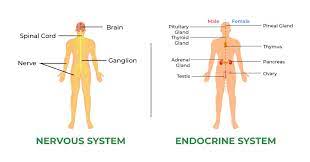BIOLOGY -MODULE 5 COMMUNICATION,HOMEOSTASIS AND ENERGY
1/16
Earn XP
Description and Tags
Name | Mastery | Learn | Test | Matching | Spaced |
|---|
No study sessions yet.
17 Terms

Cell signalling
Cells communicate with each other by cell signalling to produce a response

Cell signalling in animals responses
Hormones (chemical response)
Neurones (electrical response)

Cell signalling in plants responses
Plant hormones (chemical hormones)

Why do multicellular cells communicate?
Organisms must respond to stimulus
1) Immune response
2) Maintain blood glucose Regulation
3) To complete a task
4) Tissue repair
5) Maintain body temperature

How do multicellular organisms communicate?
Hormonal and the nerve communication system
Examples of internal environments kept relatively constant:
Blood glucose concentration
Internal temperature
Water potential (oedema)
Blood PH
Principles of homeostasis
.
Define Homeostasis
the ability to maintain a relatively constant internal conditions at a set point
Examples of internal conditions
Body temperature 37 degrees
Blood PH 7.35 - 7.45
Blood glucose concentration 70-100 mg/dl
Blood oxygen saturation 98%
Water potential of blood
Homeostasis Mechanism/Control
Stimulus
Receptor
Sensory Neuron
Relay neurone
Control centre
Motor neurone
Effector
Define Receptor
Cells that detects changes
Define Control centre
Interprets and decides the response
Define Effector
Muscles or glands that carry out the response

What is negative feedback?
Returning a change in a condition back to a set point

What is positive feedback?
Reinforce change, so the change deviates further from the set point.
Vasodilation of arterioles to lose heat
1) Smooth muscle of Arteriole Vasodilates, widens the lumen
2)More blood flows to the surface of the skin
3)More heat is lost from the skin surface via radiation, Convection reverses the body temperature back to a set point (Negative feedback)
Vasocontraction of arterioles to conserve heat
1) Smooth muscle of Arteriole Vasoconstricts, narrows the lumen
2)Less blood flows to the surface of the skin
3)Less heat is lost from the skin surface via radiation, Convection reverses the body temperature back to a set point (Negative feedback)